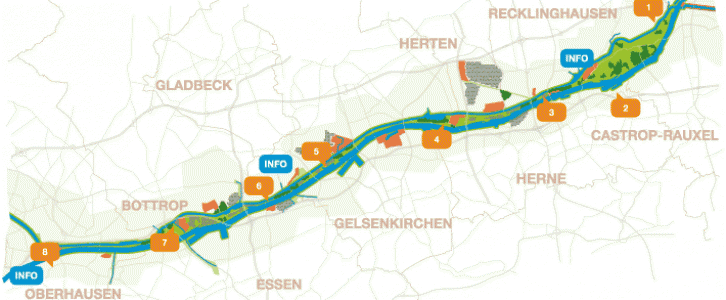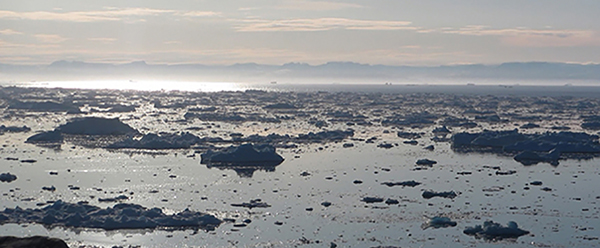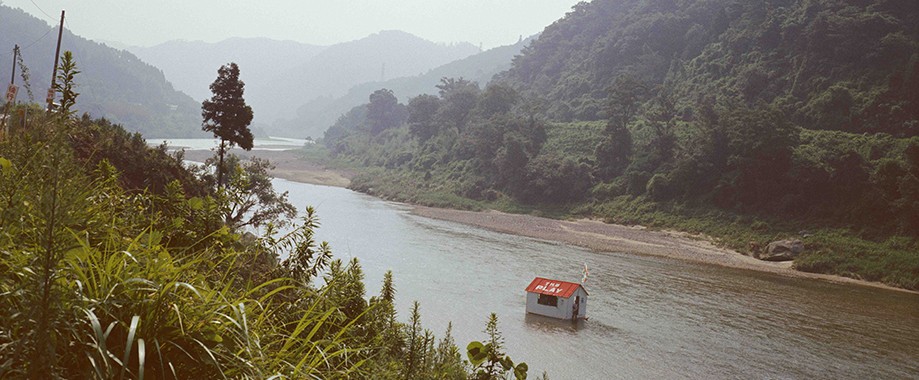
As a triennale until 2020, the international exhibition EMSCHERKUNST in the northern Ruhr area accompanies one of Europe’s largest reclamation projects – the conversion of the open sewage canal Emscher into a natural river. During the European Capital of Culture RUHR.2010, the exhibition EMSCHERKUNST.2010 was the biggest art project in public space and fascinated 200.000 national and international visitors.
The next exhibition EMSCHERKUNST.2013 takes place from 22nd June 2013 until 6th October 2013, exhibition area will be the Emscher Island between Gelsenkirch en and Oberhausen as well as the Emscher Delta near Dinslaken/Duisburg where the river flows into the Rhine.

The Emscher conversion
For two decades with the Emscher conversion, the worlwide largest project for the shaping of a new riverscape, a prototype of cooperative regional planning right in the heart of the Ruhr area is realised. In the nineteen-nineties the International Building Exhibition Emscher Park (IBA) and its Emscher Park set the tone for the transformation of the landscape, former industrial wastelands became natural areas or terrains for new types of use like work, commerce, living and leisure. This process will continue with the Emscher conversion until the year 2020: From 350 kilometres concrete sewage canals along the Emscher again reclaimed, living waters will arise: the vision of the New Emscher Valley.
Actually the Ruhr area should be named Emscher area. Since in the middle of this region runs a river, which flows across the core zone of this world known conurbation: the Emscher. It has ist source in Holzwickede near Dortmund and flows about 80 km further west near Dinslaken into the Rhine. It is the connecting element between the metropolis Dortmund and Essen, it flows through Bottrop, Castrop-Rauxel, Recklinghausen – altogether 12 cities. For more than over a century the Emscher served as an open sewage canal for an area shaped by rapid population growth and heavy industry. Since the nineteen-nineties the „Cloaca Maxima“ is converted within a project for generations – a once in a century opportunity for the region. The Emscher is central element of the structural transformation and simultaneously a piece of industrial history. Till the 19th century the Emscher was an insignificant river in a thinly populated environment. It made its way through meadows, fen woods or swampy heaths, thereby developing its idiosyncratic character. Due to the moderate gradient of only 122 metres, at a distance over 100 kilometres between the source in Holzwickede to the Rhine, no river bed could be formed. The Emscher constantly found itself new ways and especially after heavy rainfall flooded wide areas.
Coal mining changes the face of the area
Then industry and coal mining entered, fast the Emscher ought to loose its rural appearance. With the upcoming coal and steel industry more and more factories settled, the population increased incredibly fast. A look at the economic geographical maps of the end of the century shows the consequences: hundreds of coal mines, dozens of steelworks, numerous industrial housings popped up everywhere. Commercial and domestic sewage was chanelled into the small stream Emscher and its tributaries. Additionally, as a result of the underground coal mining, in large areas mining subsidences occurred: the drainage to the Rhine deterioriated dramatically, during high water again and again it came to heavy overflows, which flooded entire urban districts and harmed people with sanitary nuisances. The increasingly contaminated water caused dysentery and cholera.
Help for the maltreated river
Consequential, when the surrounding cities, coal mining and industry in 1899 founded the Emschergenossenschaft, the goal of providing free drainage for the maltreated river and therefore solving health and flood problems was in the centre of attention. Not using underground sewage canals as a solution, can be explained by the at that time mining subsidences of up to 25 metres; subsurface pipes could have never resisted this pressure and shifting. Thus, the course of the river was shortened, straightened and put in concrete ground slabs – similar to a canal.
From back – to front yard
Today, over a century later, almost all coal mines and most of the steelworks have disappeared. That gives the Emscher the chance to change her face again. The old Emscher, straightened and forced into concrete ground slabs, and its tributaries will again become a water system without sewage contamination. Former no-go-areas will turn into attractive recreation centres, accessible by cycle- and walking trails.
4.5 billion euros total investment
Kick-off for the Emscher conversion was 1991: Besides the construction of new sewage treatment plants and subsurface canals over a distance of 400 kilometres, the programme also contains the natural conversion of all waters – with a total volume of around 4.5 billion euros over a period of about 30 years. Ever since, besides 4 sewage treatment plants today 212 kilometre sewage canals and nearly 70 kilometre water courses are converted already. With the ground-breaking ceremony for the pumping station Gelsenkirchen in 2009, the starting signal for the construction of a sewage canal in 51 kilometre length between Dortmund-Deusen and Dinslaken was given. 2020 the whole Emscher conversion will be completed.



